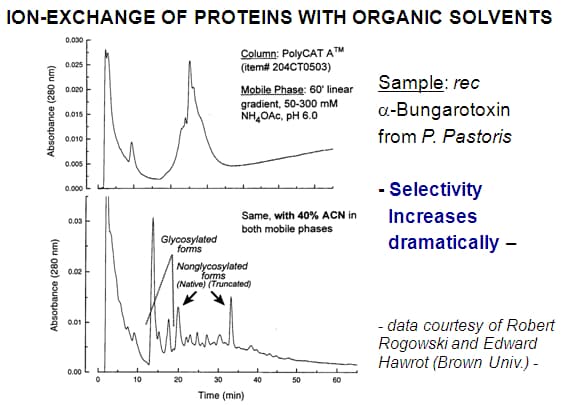
Get In Touch
Organic solvents “denature” proteins; that is, they cause changes in tertiary structure that may cause enzymes and other proteins to lose biological activity. However, many proteins will regain their activity once the organic solvent is removed. Also, in proteomics analyses, the objective is not to isolate a biologically active protein but just to see how much of which proteins are present. In ion-exchange chromatography (IEX) of proteins, adding organic solvent to the mobile phases can sometimes improve results dramatically.
The following example shows IEX of recombinant α-bungarotoxin on a PolyCAT™ Acolumn. The protein was expressed in the yeast strain P. pastoris. This choice was unfortunate, since P. pastoris tends to attach glycan side chains to proteins that normally don’t have them, as in this case. The resulting mixture of glycoforms eluted in an envelope with a regular salt gradient [TOP]. When 40% ACN was included in the mobile phases, though, then the various forms were well-resolved [BOTTOM]. For many proteins like this in the range 15-30 KDa (growth factors, etc.), a range of 30-40% organic solvent yields optimal separations.
Column Name : PolyCAT A™ Columns
Compound Name :
Get Your Quote or Call: 040-29881474
We focus on supporting laboratory workflows & optimizing lab-wide operations
